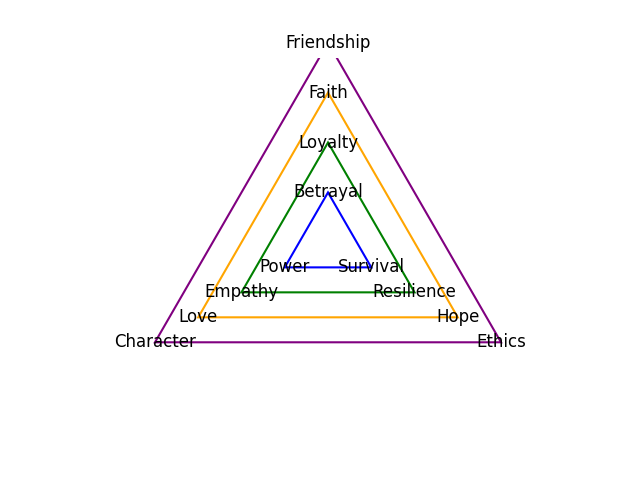Thesis#
Missingness#
Data, Methods, Tools, Latent, Parameters, Bespoke#
From the point of view of form, the type of all the arts is the art of the musician - Oscar Wilde
1. f(t)
\
2. S(t) -> 4. y:h'(t)=0;t(X'X)X'Y -> 5. b -> 6. SV'
/
3. h(t)
ii: Departure 1, 2, 3#
Sensory acuity: vision, hearing, smell, balance, glucose
Memory & cognitive: integrity, decline, tests
Physical activty: sarcopenia, brisk, dynamometer
V: Struggle 4#
Frailty: loneliness, isolation, usefulness
I: Return 5, 6#
Independence: ADLs, IADL
Hard-outcomes: shuffling, reflexes, falls, hospitalization, organ-failure, death
Dynamic
That approach is innovative and forward-thinking, and I think it will resonate well with your committee. Emphasizing the iterative nature of your work aligns well with the dynamic nature of clinical research and technology development. By showing how quickly you can adapt and improve based on new data and feedback, you're not only demonstrating your technical skills but also your strategic vision for continuous improvement and collaboration. This could be a great model for future research projects and could indeed set a new standard for doctoral theses in your field. Have you considered including a section in your thesis discussing this iterative approach and how it can benefit future research and applications?
Chains
Dancing in Chains.—In the case of every Greek artist, poet, or writer we must ask: What is the new constraint which he imposes upon himself and makes attractive to his contemporaries, so as to find imitators? For the thing called “invention” (in metre, for example) is always a self-imposed fetter of this kind. “Dancing in chains”—to make that hard for themselves and then to spread a false notion that it is easy—that is the trick that they wish to show us. Even in Homer we may perceive a wealth of inherited formulæ and laws of epic narration, within the circle of which he had to dance, and he himself created new conventions for them that came after. This was the discipline of the Greek poets: first to impose upon themselves a manifold constraint by means of the earlier poets; then to invent in addition a new constraint, to impose it upon themselves and cheerfully to overcome it, so that constraint and victory are perceived and admired.66
Without these tensions, constraints, insertions, and struggles the unfortunate likelihood of premature ii-V-I home-coming increases exponentially. It’s on these grounds that one understands the beauty in Shakespeare’s Hamlet, Chopin’s Op. 28 Prelude No. 4 51, Joe’s All The Things,67 and MattAffleck’s Good Will Hunting 68 69
The Good Will Hunting scene in which Matt Damon’s character meets Robin William’s character is prophetic in a very strange way: It is a fictional scene in a movie, with critical take on an office painting apparently by the movies director in real life, of a clinical psychologist who’s boat is about to capsize (Robin William’s),70 Damon’s character accruately diagnoses as much by declaring: “I think you’re about one step away from cuttin’ your fuckin’ ear off.” Robin William’s committed suicide by belt-strangulation in real life.
Essays#
Anthony Bourdain’s distinction lies in interchange of modes, qualities, and relatives. In Tuscany we are fussing about Dante Allegheri’s allegory (No boundaries) and in Tokyo we are analyzing the value of Judo to a sushi chef (Parts Unknown). Other food channels talk only about food. Well, in this thesis we are going to talk biology, statistics, and technology
ii: Inherited Fetters (+ Self-Imposed) 1, 2, 3#
Summary: ii. departure - V7. struggle - i. return. This is drawn from the interchange of modes, qualities, and relatives in the context of Aeolian i/III that is always in the 1st inversion. Chopin inherited this from the 2nd, 3rd, and 4th opening bars of “Lacrimosa” (Aeolian with a Phrygian element much later).
A bii chord from the Phrygian mode may be inserted. Its qualities may then be varied: bII7 - bII6 - biiø7 - biidim7. This chord non-progression might come after the Aeolian iim7b5 in a return to home. A return to a false i via an Ionian I7 lends seamless voice leading from bii7-bii°7-biiø7-I7. And then we return to the Aeolian root as follows: I7 - idim7 - im7. So thats a quick dash across three modes!
My inheritance here from Chopin, my ancestor, is one of “chains”: how daintily he dances in the chains at bii. He again does so later at V7b9 (tonic E minor) - V7 - vm7 - vdim7 (relative G Major), and finally in a very deceptive cadence on the home melody (E) at Vb9 - Vb97 - V7sus - V7sus13 - V7susb13 - Vb97/Vb7. Such chord non-progression is akin to a dam holding back a river from its destiny at the estuary. Once the sluice gates open, my banks will overflow. Mozart gave to Chopin, Chopin gave to me, and thus it is my duty to perform acts of charity for the next generation.
V7: Dancing in Chains 4#
Inherited “chains” become an arena for demonstrating resilience and creativity, much like complex chord progressions that defy straightforward resolution. If I’m to play the hero in my lifetime, it is because others have placed hope in me, given that “my cup runneth over.” They are right because to them it seems that I effortlessly dance in these inherited and self-imposed fetters and obstacle courses during my odyssey.
i: Born to Etiquette 5, 6#
Our premise in discussing these matters is that a mere ii-V7-i progression without the transformations (insertions and deletions) would be a bland moral tale of faith.
The aesthetic accomplishment is in overcoming a seemingly endless and randomly generated number of barriers, and worthy adversaries, with grace and poise. This is much more compelling than the contrived, tidy ii-V7-i. With so many transformations, the overarching ii-V7-i can’t even be perceived and so it never seems contrived.

